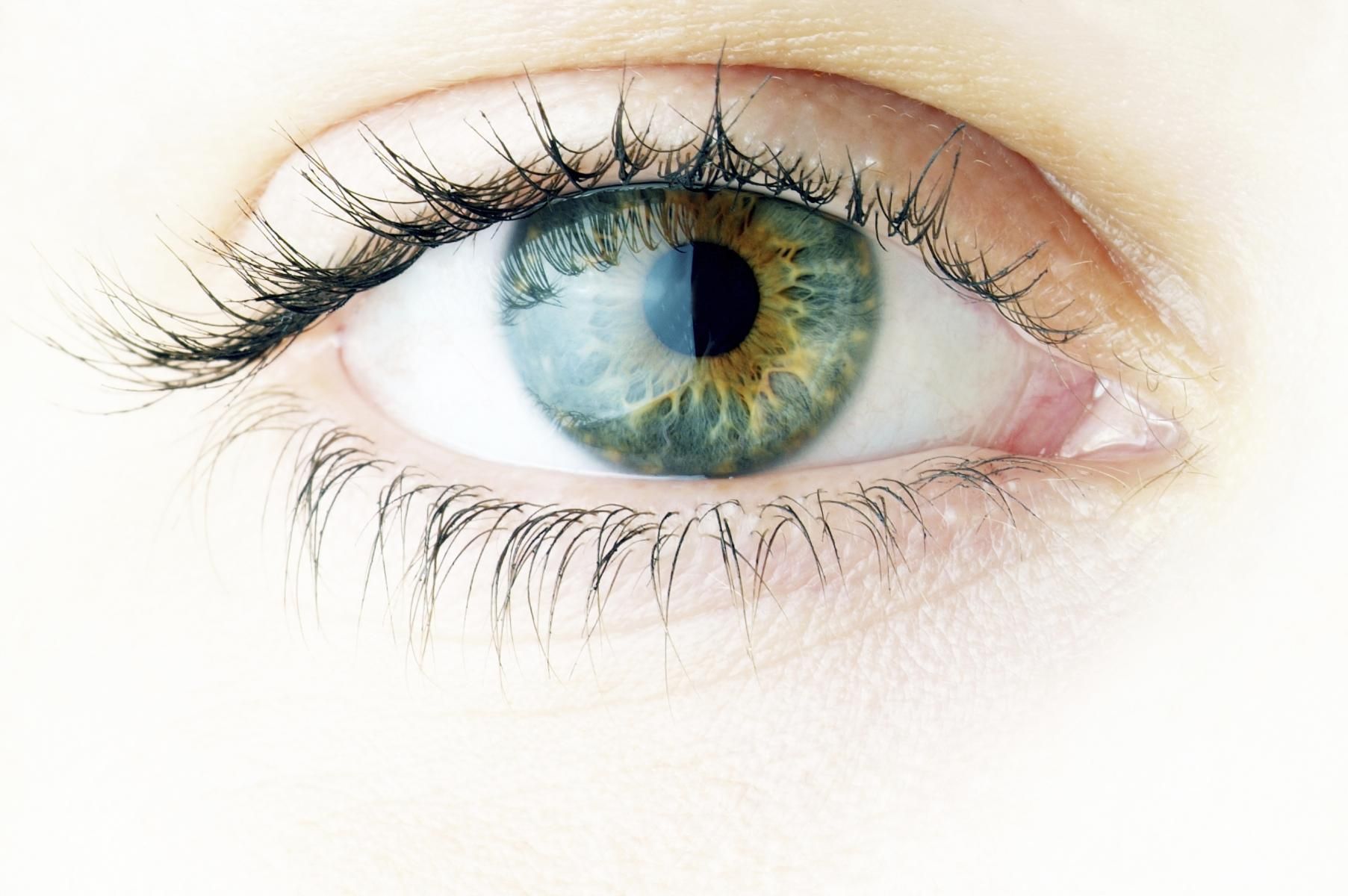Updated: AREDS2 Eye Study Results: Lutein, Zeaxanthin, Omega-3 Did Not Reduce AMD Progression Risk but Subgroup Shows Benefits
In AREDS2, researchers examined whether adding either lutein plus zeaxanthin, omega-3 fatty acids DHA plus EPA, or both combinations, to the original AREDS formula would help further decrease risk of developing AMD.

Lutein and zeaxanthin, and/or omega-3 fatty acids, when added to an existing eye health dietary supplement formula, did not further reduce the risk of progression of age-related macular degeneration (AMD). The long-awaited results of the five-year AREDS2 study, a follow-up to the original Age-Related Eye Disease Study (AREDS) sponsored by the National Institutes of Health, were published yesterday in the Journal of the American Medical Association (JAMA).
In AREDS2, researchers examined whether adding either lutein plus zeaxanthin, omega-3 fatty acids DHA plus EPA, or both combinations, to the original AREDS formula would help further decrease risk of developing AMD. The original AREDS study found that daily oral supplementation with antioxidant vitamins and minerals did in fact reduce risk of developing AMD by 25% at five years of patient follow-up. The original AREDS formula comprised vitamin C (500 mg), vitamin E (400 IU), beta-carotene (15 mg), zinc (80 mg as zinc oxide), and copper (2 mg as cupric oxide).
Researchers embarked on the second AREDS 2 study with added lutein/zeaxanthin and omega-3 fatty acids because observational data showed these nutrients may help stem development of AMD.
AREDS2 was a multicenter, randomized, double-masked, placebo-controlled phase 3 study that enrolled 4203 participants aged 50 to 85 years who were deemed to be at high risk of progression to advanced AMD. (The subjects already either had bilateral large drusen or large drusen accumulated in one eye and intermediate AMD.) The study was conducted between 2006 and 2012. All participants were given the original AREDS formula daily along with one of four additional supplement variations 1) lutein (10 mg) plus zeaxanthin (2 mg), 2) DHA (350 mg) plus EPA (650 mg), 3) all four of the nutrients-the lutein plus zeaxanthin and the DHA plus EPA, or 4) a control (which was the original AREDS formula). Subjects’ eye health was evaluated after five years from the start of the study.
Neither addition-lutein plus zeaxanthin or DHA plus EPA, nor all four ingredients combined-when added to the original AREDS formula further reduced risk of progression to AMD, researchers said. In total, 1608 study subjects progressed to advanced AMD, with this breakdown: 1) 31% for the control AREDS formula, 2) 29% for lutein plus zeaxanthin, 3) 31% for DHA plus EPA, and 4) 30% for lutein, zeaxanthin, DHA, and EPA combined.
Furthermore, neither lutein, zeaxanthin, DHA, nor EPA effected significant changes in visual acuity.
Subgroup Shows Benefits
However, a subgroup analysis showed that supplementation with the AREDS formula with lutein and zeaxanthin but no beta-carotene showed an 18% reduced risk of AMD progression compared to those who took a beta-carotene supplement without lutein and zeaxanthin.
Moreover, those subjects with the lowest baseline lutein and zeaxanthin intake (those who started off with the lowest levels of these nutrients) did experience some improvement with the lutein and zeaxanthin supplementation, said nutritional ingredient suppliers DSM Nutritional Products (Parsippany, NJ) and Kemin (Des Moines, IA). DSM Nutritional Products supplied the lutein (Kemin's FloraGLO lutein), zeaxanthin (OptiSharp), and omega-3 DHA and EPA (Ropufa) ingredients for AREDS2.
Specifically, in a group of subjects (1,055 eyes) with the lowest quintile of dietary intake of lutein and zeaxanthin (median 0.7 mg per day), there was a significant risk reduction of 26% for progression to advanced AMD.
The researchers said, “The exploratory analyses demonstrated results that suggest that the role of lutein and zeaxanthin needs to be examined further.”
In general, "The AREDS2 study participants were well nourished with a diet high in carotenoids and vegetables. The authors suggest that a greater reduction in AMD progression may have been demonstrated if the subjects’ diets had been more representative [of] those of the general U.S. population," stated Kemin in a press release. "In the U.S., the dietary intake of lutein and zeaxanthin is typically less than 1 mg per day. This amount is well below the 10 mg lutein and 2 mg zeaxanthin that the study has proven to be effective."
Lutein and zeaxanthin supplier OmniActive Health Technologies (Morristown, NJ), added, “The results were very encouraging for those quintiles that had low levels of dietary lutein/zeaxanthin intake, with around 20% reduction in risk of progression of AAMD [advanced age-related macular degeneration] over the original AREDS formulation in this group. These results are especially compelling since a majority of individuals worldwide are not consuming the fruits and vegetables necessary to receive adequate amounts of lutein and zeaxanthin through diet alone. These results make a strong case for supplementation to slow the progression to AAMD.”
Also, said OmniActive, “The JAMA Ophthalmology paper on cataracts, [which was published as] a component of the AREDS2 study, states that in general, the presence of lutein and zeaxanthin did not have a positive impact. However, when the participants were ranked based on their dietary intakes of lutein/zeaxanthin, it was observed that the supplementation with lutein/zeaxanthin appeared to have a significant effect in participants with the lowest dietary levels. Within that group, lutein/zeaxanthin was significantly associated with a 32% reduction in progression to cataract surgery. A significant reduction in any cataract and severe cataracts were also observed with supplementation in participants with low dietary intakes of lutein/zeaxanthin. This is especially noteworthy considering that the population in this [AREDS2] study was very well nourished, and the beneficial effects may be much more evident in groups representative of the general population.”
Possible Study Weaknesses
Overall, on AREDS2, although the researchers said “these null results may be attributable to the true lack of efficacy,” they also did note other possible factors that could have affected the study. These included inadequate dose, inadequate duration of treatment, or both. The researchers also said that the ratio and the form of omega-3 fatty acids-delivered in the study as ethyl esters-may be inappropriate. Also of note, none of these nutrients were found to have harmful effects during the study.
Another factor that may have affected the study was the inclusion of a secondary study randomization. Specifically, some patients in the study were further randomized to examine a secondary effect of eliminating beta-carotene and reducing the zinc dose in the original AREDS formula. The AREDS formula’s zinc dose (80 mg) was lowered to 25 mg in AREDS2 because researchers said data showed that this may be the maximum level of zinc the body absorbs.
Researchers tried eliminating the beta-carotene-in short, replacing them with lutein and zeaxanthin as an alternative-because in the original AREDS study, a very small percentage of subjects who smoked were also found to have a slightly higher risk of lung cancer if in the beta-carotene group. Thus, in addition to the omega-3 and lutein/zeaxanthin additions, subjects who were randomized a second time were given either, 1) the original AREDS formula, 2) the AREDS formula without beta-carotene, or 3) the AREDS formula with the reduced zinc dose (25 mg), or 4) the AREDS formula with no beta-carotene plus the lower zinc dose.
Researchers noted no statistically significant difference in effect on AMD progression between the low and the high zinc dose.
Researchers also found no apparent effect of eliminating beta-carotene on AMD progression, although they did notice that there were more occurrences of lung cancer in the beta-carotene group versus the group without. But Taylor Wallace, PhD, senior director of scientific and regulatory affairs for the Council for Responsible Nutrition (CRN; Washington, DC), says cutting out beta-carotene may not be the best way to avoid lung cancer. He points out that beta-carotene has many nutritional benefits in the body and that the best way to improve health status is for smokers to stop smoking.
Another weakness of the study may have been due to the fact that the ingredients were studied in combination. The researchers noted, “It is not known whether a single specific ingredient is important or if the combination is essential for its therapeutic effect.”
OmniActive points out another weakness: “We feel the positive effects of lutein and zeaxanthin supplementation would have been much more pronounced if this study had a true placebo group. Because participants assigned to the ‘placebo’ group also received the AREDS supplement, either within or outside of the secondary randomization, there was no true placebo group. Beta-carotene in the AREDS formulation decreased the serum levels of zeaxanthin and lutein for those who were taking them. Therefore, the AREDS formula was not just a pseudo-control; it also actively interfered with the performance of the lutein and zeaxanthin supplementation.”
The Bottom Line
AMD is the leading cause of blindness in the developed world and accounts for more than 50% of all blindness in the United States. Lutein and zeaxanthin are the main components of the macular pigment, while DHA is a major structural component of the retina and EPA may be a precursor to signaling molecules that potentially may influence retinal function, the researchers explained.
Wallace says the bottom line is that the original AREDS formula did work to reduce AMD advancement.
“Don’t forget that the original AREDS formula reduced AMD by 25%,” says Wallace. “With AREDS2, they were just trying to tweak the formula to see if they could get any additional effects. So this formulation theoretically still reduces the risk of AMD by 25%; that was already factored in at the beginning of this study. Remember, there was no placebo where people weren’t taking anything; even the control group was taking the original AREDS formulation. So we can assume that everybody had a decreased risk by 25%. This study was just done to see if there was anything they could do to enhance that effect even more.”
Omega-3 industry association the Global Organization for EPA and DHA Omega-3s (GOED; Salt Lake City, UT) also notes that the study took a treatment-based approach rather than a preventive approach (e.g., giving supplementation earlier on to those who do not already show signs, or that have earlier signs, of AMD). “Prevention is always more effective than treatment," the association states.
Moreover, it says, “Given the importance of DHA to eye health, the amount supplemented may have been too low to have an effect.”
Wallace adds, "Age-related eye disease has a long incubation period, and prevention through good nutrition habits should start early and continue throughout a lifespan. Maintaining good nutrition and lifestyle habits most likely have a better chance at preventing chronic disease onset than in halting or correcting a disease progression."
He says that although this study did not report a secondary analysis on the omega-3 arm, that omega-3s are an essential nutrient and one that Americans don't get enough of but should.






